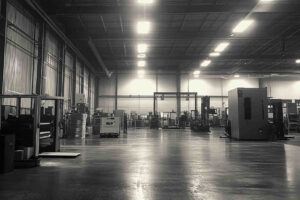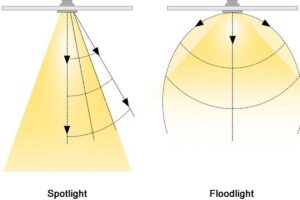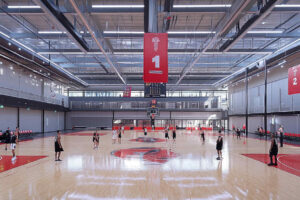Poor stadium lighting ruins games, frustrates fans, and drives up energy bills. Without the right system, safety drops and costs skyrocket. The fix? Smarter, efficient LED stadium lights.
Stadium lighting costs vary widely depending on the sport, field size, competition level, and whether it’s a new installation or a retrofit. On average, LED stadium lighting cost ranges from $200,000 to $1,000,000 for large venues, while smaller fields may cost between $30,000 and $100,000. Factors such as power of LED stadium lights, control systems, pole height, and fixture quality all influence pricing. Proper stadium lighting design ensures compliance with standards, energy efficiency, and long-term savings.
Stick with me—I’ll break down costs, standards, and money-saving strategies step by step.
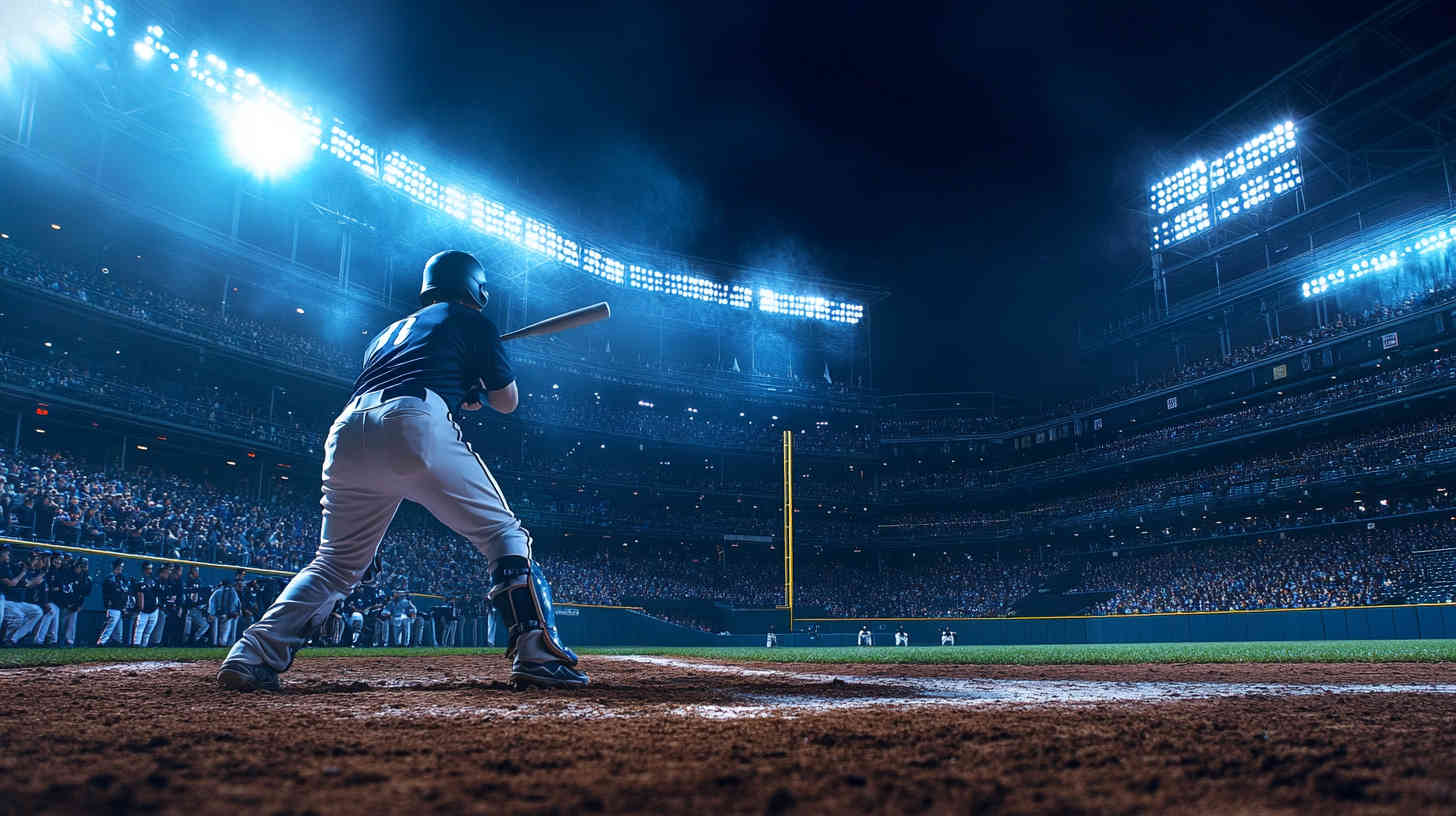
Table of Contents
Stadium Lighting Requirements & Standards
Stadium lighting requirements vary depending on the type of sport, the size of the venue, and the level of competition being played. Recreational fields, for example, typically need between 200 and 300 lux to provide sufficient visibility for players and spectators. Amateur and semi-professional matches often require higher light levels, around 500–750 lux, to ensure clear visibility for faster-paced play. At the professional level, especially for stadiums hosting televised events, the standards are much stricter—lighting levels must reach 1000–2000 lux to deliver the clarity and detail demanded by HD and 4K broadcasting.
Uniformity is just as important as brightness. Poorly designed lighting creates shadows, dark patches, or excessive glare, all of which interfere with both gameplay and viewing. Standards require uniformity ratios above 0.7 to ensure even light distribution across the entire playing field. Spectators should be able to follow the action easily, and players must never lose sight of the ball due to lighting inconsistencies.
Color rendering also plays a major role. A CRI (Color Rendering Index) of 80 or higher is usually required so that colors look natural and vivid, which is especially critical for broadcasting. Flicker-free technology is mandatory for professional games, as even slight flickering can cause issues with high-speed cameras used in modern sports coverage.
Regulatory bodies like FIFA, UEFA, and the IESNA (Illuminating Engineering Society of North America) provide clear guidelines that stadium lighting systems must meet. These standards not only ensure a better game-day experience but also guarantee compliance with safety rules, reducing risks for players, referees, and fans alike.
In short, stadium lighting isn’t just about brightness—it’s about achieving the right balance of lux levels, uniformity, glare control, CRI, and flicker-free performance to meet the demands of both players and broadcasters.

What Influences the Cost of Stadium Lighting?
Several factors determine how much a stadium lighting project will cost. Understanding these influences helps in planning a budget that balances quality, performance, and long-term savings.
Type of stadium lighting
The choice of technology has a major impact. LED floodlights are more expensive upfront compared to HID (high-intensity discharge) lamps such as metal halide. However, LEDs consume far less power, last up to five times longer, and require less maintenance. Over their lifetime, LEDs typically provide substantial savings that far outweigh the initial investment.
Size of the field
The dimensions of the playing area directly affect fixture count, wattage, and pole requirements. A small basketball court might need 20 to 30 fixtures mounted on shorter poles, while a full-sized football field could require 80 to 120 fixtures on tall poles reaching up to 30 meters. Larger fields demand more light to achieve proper lux levels and uniformity, which significantly increases costs.
New installation or LED retrofit?
A brand-new installation is the most expensive option since it involves not only the lights but also poles, cabling, trenching, foundations, and control systems. Retrofitting an existing system with LED fixtures is usually 30–40% cheaper because it reuses much of the existing infrastructure. Retrofitting is an attractive option for facilities that want to upgrade without fully rebuilding.
Competition level
The required lighting standard depends on the type of games hosted. Recreational fields can operate with lower lux levels and simpler setups. Training fields may only need basic uniformity and brightness. Professional stadiums, however, must meet strict standards for lux, uniformity, color rendering, and flicker-free operation to satisfy broadcasting requirements, which drives up costs considerably.
LED floodlights vs. HID lighting
HID lamps, like metal halides, come with lower purchase prices but burn much more energy and require frequent bulb replacements. LEDs, while more expensive at the start, drastically reduce electricity use and maintenance costs. They also provide better color rendering and instant-on operation, which HIDs cannot match. For long-term efficiency and reliability, LED floodlights are the smarter investment.
Lighting control systems and automation
Adding smart controls—such as dimming options, motion sensors, and scheduling—raises upfront costs but pays off in energy savings and convenience. Automated systems allow facilities to adjust lighting based on usage, reducing operating costs and extending fixture life. For multi-purpose venues, smart controls also make it easier to adapt lighting levels for different events.
In summary, stadium lighting costs depend not only on the size of the venue but also on the technology, installation method, and performance standards required. While LEDs with smart controls are more expensive upfront, they deliver the best long-term value in energy savings, maintenance reduction, and overall lighting quality.

Factors Affecting Stadium Lighting Costs for Different Sports
The type of sport being played greatly influences how much a stadium lighting system will cost. Each sport has different requirements for brightness, coverage, and glare control, which directly impact the number of fixtures, wattage, and pole height needed.
Football Stadiums
Football stadiums require extremely high lighting levels, especially for professional games where 1000 lux or more is standard. Because the playing area is large and lighting must be uniform across both field and sidelines, dozens of high-powered LED floodlights are needed. With tall poles (20–30 meters) and advanced aiming requirements, the cost of LED stadium lighting for football fields is among the highest of any sport.
Soccer Stadiums
Soccer stadiums share many of the same requirements as football stadiums. The fast pace of play means shadows or uneven lighting can interfere with ball visibility. High uniformity is critical, so the design often involves 4–8 poles, each carrying multiple floodlights. Costs can vary widely depending on whether the stadium hosts recreational play or professional televised matches.
Baseball Fields
Baseball lighting is unique because it requires asymmetrical design. The bases, pitcher’s mound, and outfield all need different lighting levels. Poles are usually placed strategically around the field, with lights aimed carefully to avoid glare for batters while ensuring the ball is visible in flight. This custom approach adds complexity and can raise installation costs compared to rectangular fields.
Basketball Courts
Basketball courts are smaller in size, so lighting costs are significantly lower than outdoor stadiums. Indoor courts typically use LED high bay fixtures, such as UFO or linear high bays, mounted from 7 to 12 meters high. Outdoor basketball courts require poles and LED floodlights but still cost less than larger sports fields because of the reduced area.

Tennis Courts
Tennis courts require very even light distribution across the playing surface, with particular attention to avoiding glare that could distract players. Outdoor LED tennis court upgrades often cost between $30,000 and $60,000 depending on the number of courts, pole height, and fixture quality. Indoor tennis courts usually need high bays or ceiling-mounted fixtures with anti-glare optics.
Track & Field Stadiums
Track and field facilities have multiple zones that need different lighting intensities. Running tracks require consistent lighting along their length, while finish lines and field event areas (like shot put or long jump) demand higher lux levels for accuracy and safety. This means a mix of beam angles and wattages, increasing both design complexity and costs.
Hockey Rinks
Indoor hockey rinks are challenging because of the reflective ice surface and cold temperatures. Lighting must be flicker-free, glare-free, and resistant to cold environments. High CRI is essential so players, referees, and spectators can clearly track the puck. Specialized fixtures and mounting add to costs compared to other indoor sports.
Cricket Grounds
Cricket grounds are among the most expensive to light due to their sheer size. These oval-shaped fields require multiple high-mast poles, each equipped with powerful LED floodlights that deliver uniform coverage across long distances. Because games often run late into the night and are broadcasted worldwide, lighting must meet strict professional standards. This pushes costs into the higher end of stadium lighting projects.
In summary, each sport has its own lighting demands, which shape both the design and cost of installation. Smaller indoor courts like basketball cost far less, while large outdoor venues such as football, soccer, and cricket stadiums represent some of the most expensive projects due to the high lux, uniformity, and advanced optics required.

LED Stadium Lighting Installation Cost
The cost of installing LED stadium lighting can vary dramatically based on the size of the venue, the level of play, and the required lighting standards. For a brand-new stadium, installation typically ranges between $200,000 and $1,000,000. This wide range reflects the difference between small community fields and professional sports arenas.
When budgeting for LED stadium lighting, the main cost factors include:
- Fixtures: High-powered LED stadium floodlights form the bulk of the expense. Depending on the sport and competition level, a stadium may need anywhere from 50 to more than 200 fixtures.
- Poles or masts: Tall poles (20–40 meters) are required for large fields to ensure uniform coverage. The taller and stronger the poles, the higher the cost.
- Electrical wiring and infrastructure: New cabling, transformers, and switchgear add to installation costs, especially for larger fields.
- Labor and engineering: Mounting, aiming, and testing the lights require professional teams with specialized equipment. Labor costs depend on location and complexity.
For smaller community fields, installation is much more affordable, often between $30,000 and $100,000. These setups may only require 4–8 poles and fewer fixtures, but still deliver excellent lighting for recreational use.
Professional stadiums demand higher standards—such as 1000–2000 lux for broadcast-quality games—driving up the number of lights, pole height, and precision aiming. This is why costs escalate quickly at the higher end.
Although the upfront investment is significant, the long-term savings from energy efficiency and reduced maintenance make LED stadium lighting a cost-effective choice compared to older HID systems.
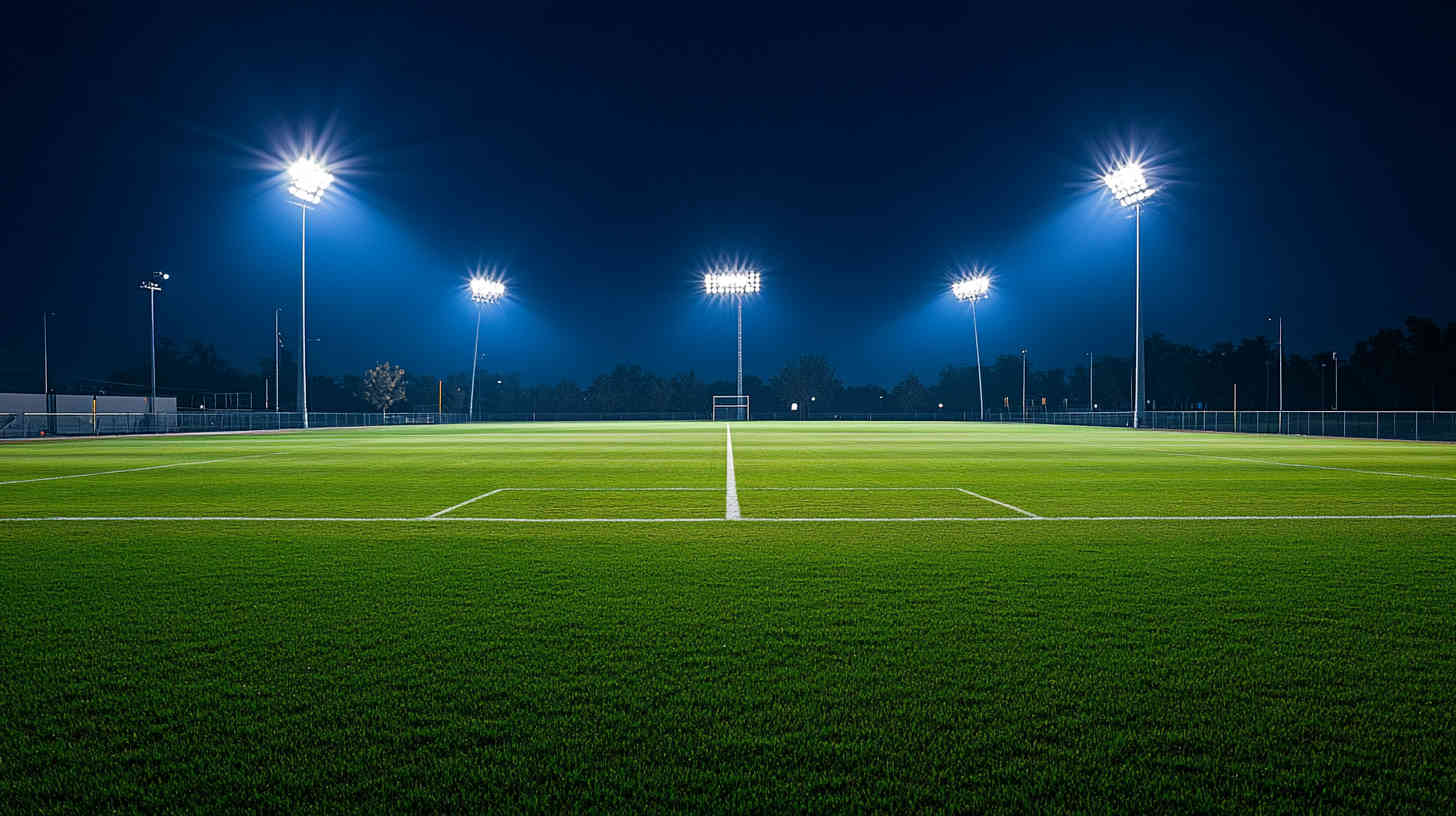
LED Retrofit Cost for Stadium Lighting Systems
Retrofitting an existing stadium with LED lighting is a cost-effective way to upgrade without the expense of building a new system from scratch. On average, a retrofit costs between $80,000 and $250,000 for a football or soccer field, depending on the number of fixtures, wattage, and level of competition.
One of the main reasons retrofits are cheaper is that much of the infrastructure can be reused. Existing poles, mounting brackets, and wiring are often kept in place, which cuts material and labor costs by up to 40% compared to a full installation. The primary investment goes into replacing outdated HID or metal halide fixtures with modern LED units.
The financial benefits extend beyond installation. LEDs consume up to 70% less energy than traditional lamps, significantly reducing monthly electricity bills. They also last much longer—50,000 to 100,000 hours versus 10,000 to 20,000 for metal halides—meaning fewer replacements and lower maintenance expenses over time.
In addition, LED retrofits improve lighting quality by delivering higher uniformity, instant on/off operation, and better color rendering. For venues hosting televised games, flicker-free performance ensures broadcast-ready lighting without additional upgrades.
Overall, an LED retrofit offers a fast return on investment, often paying for itself within 3 to 5 years through energy and maintenance savings. For many stadium operators, this makes retrofitting the smartest path forward.
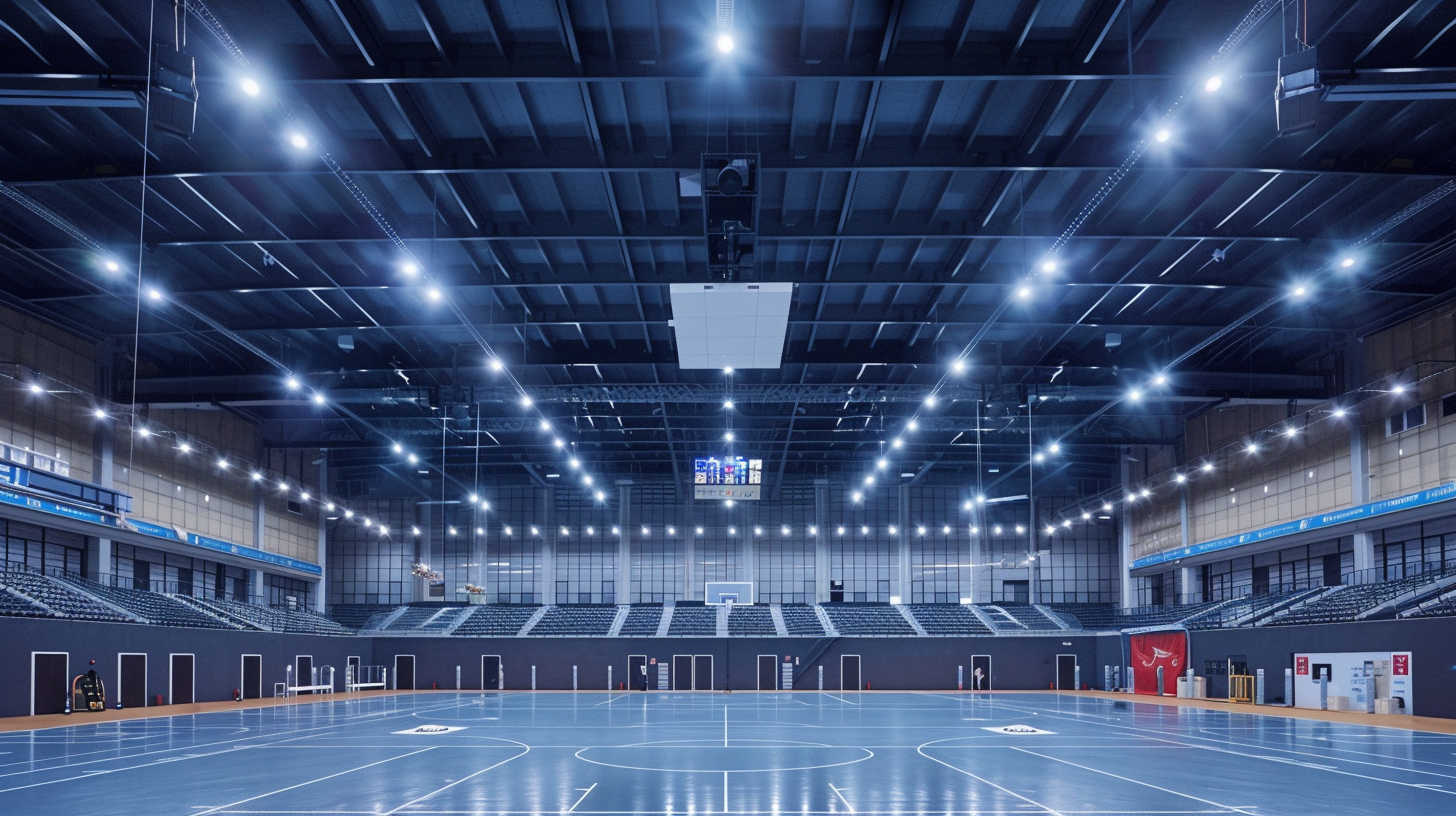
How Much Does Stadium Lighting Cost to Operate?
The cost of operating stadium lighting depends on several factors: the type of fixture, the wattage, the number of lights, and how many hours the system is used each year. Traditional HID or metal halide systems are extremely energy-hungry, often running at 1,500–2,000 watts per fixture. A large stadium with 100 of these fixtures can easily spend around $150,000 each year on electricity alone.
When the same setup is replaced with LED stadium lights, the energy draw is drastically reduced. A 1000W LED can replace a 2000W metal halide with equal or better brightness. This means the same stadium could cut its annual electricity costs down to $40,000–$50,000, a savings of 60–70%. The difference grows even larger when factoring in reduced maintenance costs, since LEDs last much longer and don’t require frequent bulb or ballast replacements.
Smart lighting controls push savings further. By integrating dimming, motion sensors, or scheduling systems, operators can avoid running lights at full power when it’s not needed. For example, during training sessions or partial facility use, lights can run at 50% brightness, cutting costs significantly.

How to Reduce Stadium Lighting Costs
Retrofitting to LED Technology
The most effective way to cut costs is by replacing old HID or metal halide lamps with LEDs. This switch reduces energy use by 60–70% while improving brightness and uniformity. For example, a 2000W HID can often be replaced with a 1000W LED, cutting power in half without sacrificing performance.
Utilize Local and Government Funding
In many regions, governments and local authorities offer subsidies, rebates, or low-interest loans for energy-efficient projects. Applying for these programs can lower upfront investment and shorten the payback period of LED upgrades.
Install Smart Lighting Controls
Automated systems allow lights to turn on only when needed and dim during training sessions or partial facility use. Features like timers, sensors, and zone-based control prevent wasted energy, especially in large multi-use stadiums.
Switch to Hybrid Power Systems
Adding solar panels or hybrid systems that combine renewable energy with grid power helps offset electricity costs. In sunny regions, solar-powered stadium lighting can cover a significant portion of the energy demand.
Optimize Light Placement and Coverage
Good design reduces the number of fixtures required. By using precision optics and optimized pole placement, stadiums can achieve uniform lighting with fewer lights, lowering both energy and maintenance expenses.
Energy-Efficient Fixtures for Specific Needs
Using high-performance LEDs ensures maximum output per watt. A 1000W LED stadium light can deliver the same or better illumination than a 2000W HID, effectively doubling efficiency.
Perform Regular Maintenance and Upgrades
Dirty fixtures, loose wiring, and outdated drivers reduce efficiency over time. Regular cleaning and inspections keep the system operating at peak performance and extend fixture lifespan.
Schedule Lighting for Non-Event Times
One of the simplest cost-saving measures is to ensure lights only run when required. Automated schedules and timers prevent stadiums from wasting electricity during downtime.
By combining these strategies, stadium operators can dramatically reduce energy bills, extend fixture life, and maintain professional-grade lighting standards at a fraction of the traditional operating cost.

Choosing the Right LED Stadium Lighting Fixtures
Selecting the right stadium lighting fixtures is not just about brightness—it’s about achieving the right balance of performance, efficiency, and long-term reliability. Poor-quality fixtures may work at first but often fail within a few years, leading to higher maintenance costs and frustrating downtime.
One of the first features to check is the protection rating. For outdoor stadiums, an IP65 rating or higher is essential to withstand rain, dust, and extreme weather. In harsher environments, like coastal areas with high humidity or salt exposure, IP66 or IP67-rated fixtures are even better. Durability also extends to the housing—aluminum die-cast housings with anti-corrosion coatings are preferred for long-lasting performance.
Another critical factor is light quality. A Color Rendering Index (CRI) of 80 or higher ensures players, referees, and spectators see accurate colors of uniforms, field markings, and the ball. For televised events, a CRI closer to 90 is recommended to enhance broadcast quality. Pair this with a color temperature in the 5000K–6000K range to achieve a bright, natural daylight feel that boosts visibility.
Flicker-free drivers are also essential. While flicker may not be noticeable to the naked eye, it can ruin high-speed cameras used in professional broadcasts. A quality driver guarantees stable, flicker-free lighting across all brightness levels, ensuring smooth play and broadcast-ready performance.
Beam angles and optics determine how well the field is illuminated. Adjustable optics—ranging from narrow beams (15°–30°) for long-distance throws of light to wide beams (60°–120°) for general coverage—allow designers to fine-tune light distribution and reduce dark spots or glare. Advanced optics with visor shields or anti-glare lenses are especially important in stadiums, where player comfort and fan experience matter.
Finally, while premium LED floodlights may cost more upfront than cheap imports, the difference pays off over time. High-quality lights last 50,000 to 100,000 hours, cutting down replacement cycles. They also come with warranties of 5 to 10 years, ensuring peace of mind for stadium operators. Investing in quality fixtures is ultimately the smarter financial decision, as it lowers total cost of ownership and delivers consistent lighting performance year after year.

Conclusion
Stadium lighting costs vary with sport, size, and technology, but LEDs consistently offer the best long-term savings. With proper design and smart controls, you’ll lower costs, improve performance, and extend fixture lifespan.
Need help planning or upgrading your stadium lighting system? Contact Logos Lighting today for expert advice and high-performance LED solutions.


